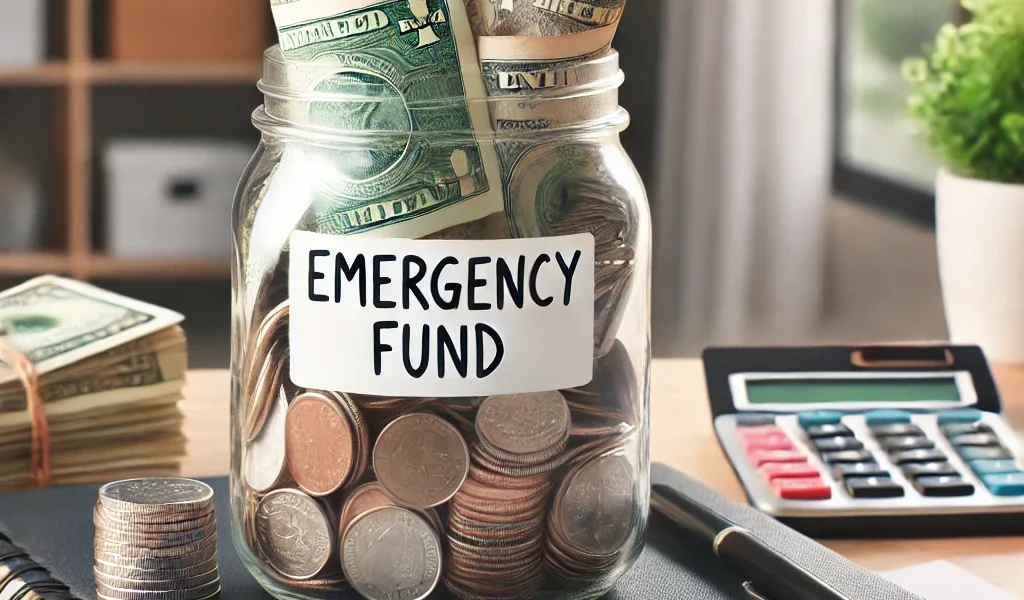Life is unpredictable. Whether it’s a medical emergency, job loss, or unexpected home repairs, unforeseen expenses can disrupt even the most well-planned budgets. That’s where an emergency fund comes in. It acts as a financial safety net, providing peace of mind and financial security during challenging times.
In this guide, we will walk you through everything you need to know about emergency funds—what they are, why they are crucial, and practical strategies to build and maintain one. By the end, you’ll have the tools to safeguard your finances against life’s uncertainties.
What Is an Emergency Fund?
An emergency fund is a dedicated pool of money set aside to cover unexpected expenses. These funds are not meant for planned purchases or routine expenses. Instead, they are a financial cushion to help you weather unforeseen financial storms.
Examples of emergency expenses include:
- Medical emergencies and hospital bills
- Sudden job loss or reduced income
- Urgent home or vehicle repairs
- Family emergencies
Why Is an Emergency Fund Essential?
Having an emergency fund offers both practical and emotional benefits:
- Financial Security: Prevents you from relying on high-interest debt (like credit cards or loans) during a crisis.
- Peace of Mind: Reduces stress by knowing you are financially prepared for unexpected situations.
- Maintains Lifestyle: Helps cover essential expenses while you recover from an unexpected event.
- Prevents Financial Setbacks: Avoids depleting your long-term savings or retirement funds.
How Much Should You Save in an Emergency Fund?
The right amount depends on your unique financial situation. Experts recommend saving:
- Basic Emergency Fund: At least 3 months’ worth of essential living expenses.
- Comprehensive Emergency Fund: 6-12 months’ worth of living expenses for added security.
Consider these factors when setting your emergency fund target:
- Income Stability: If your job is secure, 3-6 months may suffice. If you have irregular income, aim for 9-12 months.
- Dependents: Households with children or dependents should aim for a larger fund.
- Health Status: If you have medical conditions, factor in additional healthcare costs.
- Debt Level: Higher debt burdens may require a larger safety net.
Step-by-Step Guide to Building an Emergency Fund
- Assess Your Monthly Expenses
Identify essential expenses such as:
- Rent/Mortgage
- Utilities (Electricity, Water, Internet)
- Groceries
- Transportation
- Insurance
Calculate the total monthly amount and multiply it by the number of months you want to cover.
- Set a Realistic Savings Goal
Break your savings goal into smaller, achievable milestones. For example:
- Goal 1: Save $1,000 as a starter emergency fund.
- Goal 2: Build up to 3 months’ worth of expenses.
- Goal 3: Continue saving until you reach 6-12 months’ worth.
- Create a Dedicated Emergency Fund Account
Open a separate, easily accessible savings account for your emergency fund. Consider these options:
- High-Yield Savings Account (HYSA): Offers better interest rates while keeping funds liquid.
- Money Market Account: Provides a balance of accessibility and higher returns.
Avoid using checking accounts to prevent accidental spending.
- Incorporate Emergency Savings into Your Budget
Treat your emergency fund as a recurring bill. Allocate a portion of your monthly income toward it.
- Automate transfers to your emergency fund account.
- Aim to save 10-20% of your income, if possible.
- Cut Unnecessary Expenses
Review your spending habits and identify areas to reduce:
- Cancel unused subscriptions.
- Cook at home instead of dining out.
- Limit impulse purchases.
Redirect these savings into your emergency fund.
- Boost Your Income
Consider ways to increase your earnings and accelerate your savings:
- Take on freelance or gig work.
- Sell unused items.
- Use bonuses and tax refunds to grow your fund.
- Replenish When Used
If you need to withdraw from your emergency fund, prioritize rebuilding it as soon as possible.
Common Mistakes to Avoid
- Not Starting at All: Begin saving even if you can only afford small amounts.
- Using the Fund for Non-Essentials: Only dip into it for true emergencies.
- Over-Saving: While a robust fund is essential, excessively hoarding cash may prevent you from investing and growing your wealth.
- Ignoring Regular Reviews: Reassess your fund annually to adjust for lifestyle or expense changes.
Emergency Fund Alternatives for Extreme Situations
If you’re struggling to build an emergency fund, consider these fallback options (as a last resort):
- Personal Lines of Credit: Useful in urgent cases but come with interest costs.
- Home Equity Line of Credit (HELOC): If you own property, this can be a backup.
- Family or Friends: Borrow responsibly and formalize the agreement.
When to Use Your Emergency Fund
Only use your emergency fund for urgent, unavoidable expenses that impact your essential well-being or financial stability. Ask yourself:
- Is this expense unexpected?
- Is it necessary?
- Will it impact my ability to meet basic needs?
If the answer is “yes” to all three, it’s appropriate to use your emergency fund.
Maintaining and Growing Your Emergency Fund
- Annual Check-In: Review and adjust based on changes in income or expenses.
- Savings Challenges: Try strategies like a no-spend month to boost your fund.
- Windfall Strategy: Allocate windfalls (like bonuses) to grow your emergency fund.
Conclusion: Prepare Today for a Secure Tomorrow
Building an emergency fund is one of the most important steps toward financial security. By starting small, staying consistent, and avoiding common pitfalls, you can create a safety net that protects you during uncertain times.
Take control of your financial future today. No matter your starting point, every dollar saved brings you closer to peace of mind and lasting financial stability.
Disclaimer: This article is for informational purposes only and does not constitute legal or financial advice. Always consult with a financial advisor before making financial decisions.




